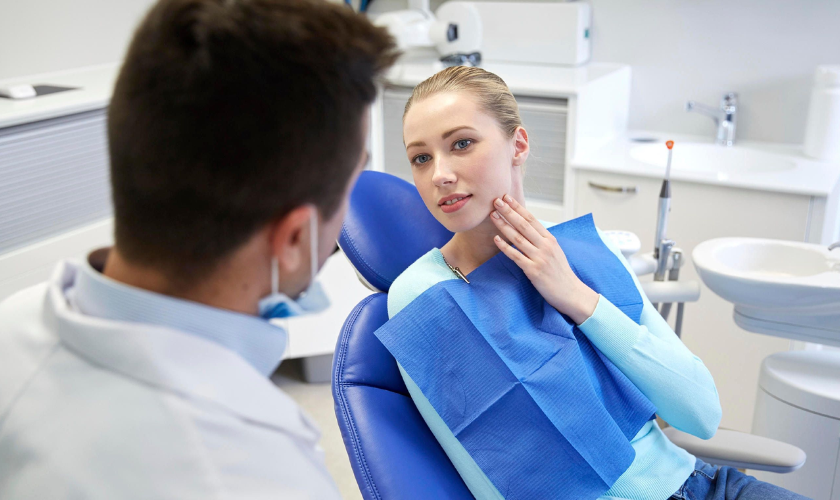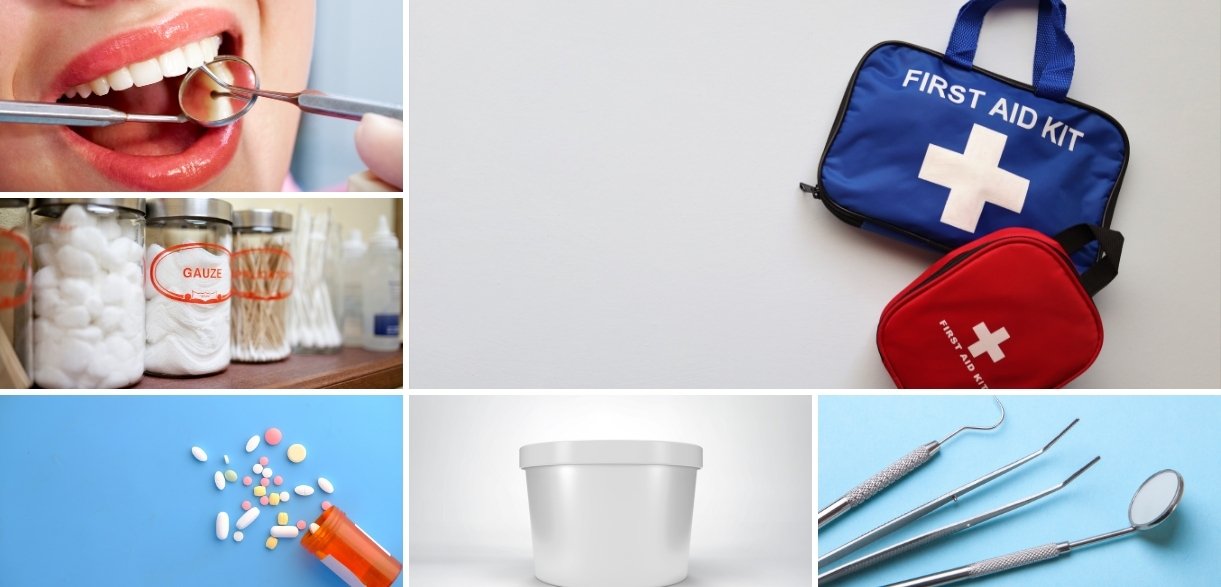
Imagine biting into something as simple as a piece of bread, and suddenly, you feel a sharp crack in your mouth. A broken tooth can happen in the blink of an eye, turning an ordinary day into a painful ordeal. The discomfort, the jagged edges, and the fear of what might come next can be overwhelming. However, knowing that emergency dentistry is available can provide a much-needed sense of relief. Immediate action is crucial when it comes to dental emergencies, especially when a broken tooth is involved. If you’re wondering what steps to take and how emergency dental care can help, keep reading to learn how you can quickly reclaim your smile.
Facing a Broken Tooth: The Immediate Steps You Need to Take
A broken tooth can occur unexpectedly, whether during a meal, a sports activity, or a simple accident. It often happens at the most inconvenient times, leaving you panicked and in pain. The immediate aftermath of a broken tooth can be overwhelming, but knowing what to do can significantly reduce the stress and potential complications.
If you find yourself with a broken tooth, staying calm is crucial. Assess the damage by gently rinsing your mouth with warm water to remove any debris. If there’s bleeding, apply gauze to the area and maintain pressure until it stops. Over-the-counter pain relievers can help alleviate discomfort until you can reach a dentist. However, avoid using aspirin directly on the tooth or gums, as this can irritate the tissue.
Depending on the severity of the break, it might be tempting to think the problem can wait. But delaying treatment can lead to more significant issues. If your tooth has a sharp edge, it may cause cuts or sores inside your mouth. More importantly, the longer the broken tooth is left untreated, the higher the risk of infection or further damage.
Why Emergency Dentistry Is Essential for a Broken Tooth
Emergency dentistry is designed for situations exactly like this. Whether you’re dealing with a minor chip or a severe fracture, prompt dental care can prevent long-term damage and complications. A broken tooth is more than just a cosmetic concern—it can impact your overall oral health, leading to issues such as infection, decay, and even tooth loss if not addressed promptly.
When you visit an emergency dentist, the first step is to evaluate the extent of the damage. Not all breaks are the same. Some might only affect the enamel, while others can expose the inner layers of the tooth, including the dentin or pulp. The latter is particularly concerning, as exposure of the pulp increases the risk of infection, which can spread to other parts of your body if left untreated.
In some cases, a broken tooth might be salvageable with a simple procedure like bonding, where a tooth-colored resin is used to fill in the gap. For more extensive damage, a crown or veneer might be necessary to restore the tooth’s function and appearance. In the worst cases, if the tooth’s root is damaged, a root canal might be needed to save the tooth.
Different Types of Tooth Fractures and Their Treatments
To better understand why emergency dentistry is critical, it’s helpful to recognize the different types of tooth fractures and how they’re treated:
- Minor Chips: These are small cracks or breaks that only affect the tooth’s enamel. While they may not cause immediate pain, they should still be addressed to prevent further chipping. Treatment often involves smoothing the area and possibly applying a composite resin.
- Cusp Fractures: These occur when a piece of the chewing surface of the tooth breaks off. While they might not always cause pain, they can affect the functionality of the tooth. Treatment typically involves a crown to protect the tooth.
- Cracked Teeth: A cracked tooth may involve damage that extends deeper into the tooth, potentially affecting the dentin and pulp. Depending on the severity, treatment could range from bonding to a root canal and crown.
- Split Teeth: When a crack extends from the surface of the tooth down into the root, it’s classified as a split tooth. This is a serious condition that often requires extraction and replacement options like implants or bridges.
- Vertical Root Fractures: These fractures begin in the root of the tooth and extend upward. They may not be immediately visible, but they can lead to infection and inflammation. Extraction is often necessary in these cases.
How Emergency Dentistry Provides Immediate Relief and Long-Term Solutions
When faced with a dental emergency, especially a broken tooth, quick intervention is key. Emergency dentistry is designed to provide immediate relief while also considering long-term solutions. For many, the priority is to alleviate pain and restore the tooth’s function. But emergency dental care goes beyond just fixing the immediate issue—it aims to protect your oral health moving forward.
One of the primary benefits of emergency dental care is pain management. Broken teeth can be incredibly painful, especially if the nerve is exposed. Emergency dentists are equipped to provide pain relief quickly, whether through medication, temporary fillings, or other treatments. This immediate care can make a significant difference in your comfort level.
In addition to pain relief, emergency dentists work to stabilize the tooth and prevent further damage. This might involve applying a temporary crown, bonding the tooth, or performing a root canal. The goal is to ensure that the tooth remains functional and that your overall oral health is preserved.
Preventing Further Damage: What to Expect During Your Emergency Dental Visit
When you arrive at an emergency dental clinic, you can expect a thorough examination. The dentist will assess the severity of your broken tooth and determine the best course of action. X-rays may be taken to get a clear view of the damage and ensure that no other teeth or structures are affected.
If the damage is minor, the dentist may be able to repair it during your visit. This could involve bonding, applying a crown, or smoothing out rough edges. For more severe breaks, a temporary solution may be provided until you can return for more extensive treatment.
Throughout your visit, the dentist South Hills will focus not only on fixing the immediate problem but also on ensuring that your tooth remains healthy in the long term. This might involve discussing preventive measures, such as wearing a mouthguard during sports or avoiding hard foods that can cause further damage.
The Risks of Ignoring a Broken Tooth
Ignoring a broken tooth is never a good idea, no matter how minor the damage may seem. Even small chips can weaken the tooth, making it more susceptible to further fractures. Over time, what might have been a simple fix can turn into a much more complex and costly problem.
One of the most significant risks of ignoring a broken tooth is infection. When the tooth’s inner layers are exposed, bacteria can easily enter, leading to decay and infection. If the infection spreads, it can result in more serious health issues, such as abscesses or even sepsis.
Moreover, a broken tooth can affect your bite and how you chew, leading to additional wear and tear on your other teeth. This can create a domino effect, where one damaged tooth leads to issues with others.
Emergency Dentistry and the Importance of Swift Action
Emergency dentistry exists because dental problems don’t always happen at convenient times. A broken tooth is a prime example of a dental issue that requires immediate attention. The sooner you seek help, the better your chances of preserving the tooth and avoiding more serious complications.
Swift action can mean the difference between saving and losing a tooth. If the break is severe enough to expose the tooth’s pulp, quick intervention can prevent the need for more extensive procedures like root canals or extractions. In some cases, the tooth can be saved entirely with timely treatment.
Emergency dentists understand that these situations can be stressful and painful. Their goal is to provide immediate care that alleviates discomfort and stabilizes the situation. From there, they can work with you to develop a long-term plan for restoring and maintaining your oral health.
Preparing for Dental Emergencies: Prevention and Planning
While it’s impossible to prevent every dental emergency, you can take steps to reduce your risk of experiencing a broken tooth. Regular dental check-ups are essential, as they allow your dentist to identify and address potential problems before they become emergencies.
Wearing a mouthguard during sports or other high-risk activities is one of the simplest and most effective ways to protect your teeth. Similarly, being mindful of what you eat—avoiding hard or sticky foods that can cause damage—can go a long way in preventing fractures.
It’s also helpful to have a plan in place for dental emergencies. Know where the nearest emergency dental clinic is and keep their contact information handy. If you have a regular dentist, ask if they offer emergency services or if they can recommend someone who does.
Being prepared can make a significant difference in how you handle a dental emergency. Knowing what to do and where to go can reduce your stress and ensure that you receive prompt care.
Long-Term Solutions After Emergency Dental Care
After the immediate issue of a broken tooth is addressed, your dentist will likely discuss long-term solutions. Depending on the severity of the break, this might involve additional procedures such as crowns, veneers, or even implants. The goal is to restore the tooth’s function and appearance while preventing further complications.
Crowns are a common solution for broken teeth, as they provide a protective covering that strengthens the tooth and restores its appearance. Veneers can be used for more minor fractures, offering a less invasive option that still provides excellent results.
In cases where the tooth cannot be saved, your dentist may recommend an implant or bridge to replace the missing tooth. These solutions not only restore your smile but also help maintain the integrity of your bite and prevent shifting of your other teeth.
Reclaiming Your Smile After a Dental Emergency
A broken tooth can feel like a major setback, but with the right care, it doesn’t have to be. Emergency dentistry offers the tools and expertise needed to address the immediate issue and set you on the path to recovery. From pain relief to long-term solutions, emergency dentists are equipped to handle even the most challenging situations.
The key to reclaiming your smile after a dental emergency is prompt action. Don’t let fear or uncertainty hold you back from seeking the care you need. Whether it’s a minor chip or a more serious fracture, emergency dentists are ready to help you get back to normal as quickly as possible.
In summary, if you’re dealing with a broken tooth, emergency dentistry is your best option for immediate relief and long-term health. With professional care, you can restore your tooth and protect your smile for years to come. For residents of South Hills, finding an Emergency Dentist in South Hills ensures that you receive timely and effective treatment when you need it most.





